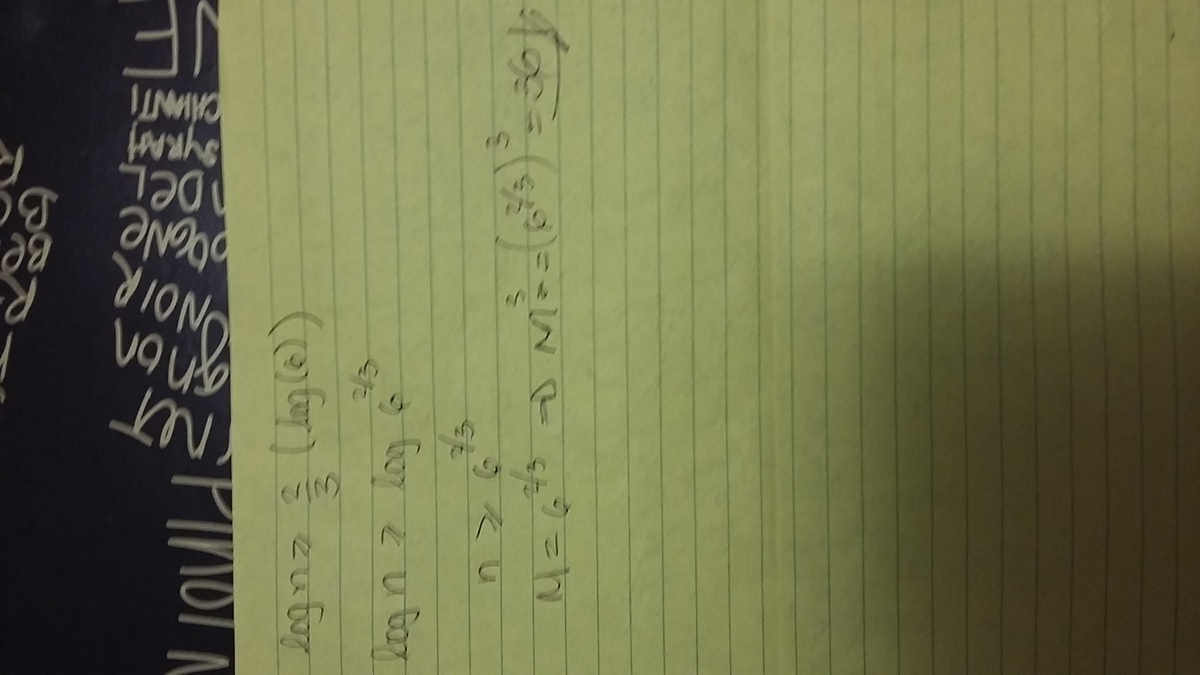The Minimum Possible Base For Two Logs
lo g 5 n 3 0 5 ≥ lo g 4 n 4 8
Over the domain n > 1 , let M be the smallest value of n that satisfies the above inequality.
What is M 3 ?
The answer is 36.
This section requires Javascript.
You are seeing this because something didn't load right. We suggest you, (a) try
refreshing the page, (b) enabling javascript if it is disabled on your browser and,
finally, (c)
loading the
non-javascript version of this page
. We're sorry about the hassle.
3 solutions
Neatly done! Upvoted! :)
Nicely done
I used change of base to find the maximum lower bound, hence
M


Wow, nice technique. I shall remember to try to divide it into parts then simplify. Thanks a lot.
Great method!
Let's change the base to 10 ( so log from now on means l o g 1 0 ).
We get at equality that
l o g ( 5 n ) l o g ( 3 0 5 ) = l o g ( 4 n ) l o g ( 4 8 )
or
l o g ( 3 0 5 ) . l o g ( 4 n ) = l o g ( 4 8 ) . l o g ( 5 n ) .
Using the identity that l o g ( a . b ) = l o g ( a ) + l o g ( b ) , we get
l o g ( 3 0 5 ) . ( l o g ( 4 ) + l o g ( n ) ) = l o g ( 4 8 ) . ( l o g ( 5 ) + l o g ( n ) ) .
Isolating log n, we obtain :
l o g ( n ) = l o g ( 4 8 ) − l o g ( 3 0 5 ) l o g ( 3 0 5 ) . l o g ( 4 ) − l o g ( 4 8 ) . l o g ( 5 ) ,
which gives the solution n 3 = 3 6 , using a pocket calculator.
I tried this but after that I tried to simplify it more and failed.
lo g 5 n 3 0 5 ≥ lo g 4 n 4 8 ⇒ 3 0 5 ≥ ( 5 n ) lo g 4 n 4 8 .
Now 3 0 5 ≥ ( 4 5 × 4 n ) lo g 4 n 4 8 = ( 4 5 ) lo g 4 n 4 8 ( 4 n ) lo g 4 n 4 8 = ( 4 5 ) lo g 4 n 4 8 × 4 8 .
This implies that 8 5 5 ≥ ( 4 5 ) lo g 4 n 4 8 . Note that 8 5 5 = ( 4 5 ) 2 3 , hence ( 4 5 ) 2 3 ≥ ( 4 5 ) lo g 4 n 4 8 which means that 2 3 ≥ lo g 4 n 4 8 .
Thus ( 4 n ) 2 3 ≥ 4 8 ⇒ 8 n 2 3 ≥ 4 8 ⇒ n 2 3 ≥ 6 ⇒ n 3 ≥ 3 6 .
So the minimum value of n 3 is 3 6 .